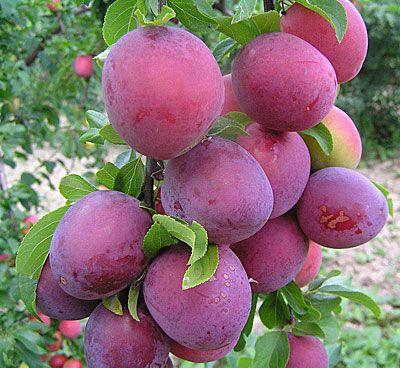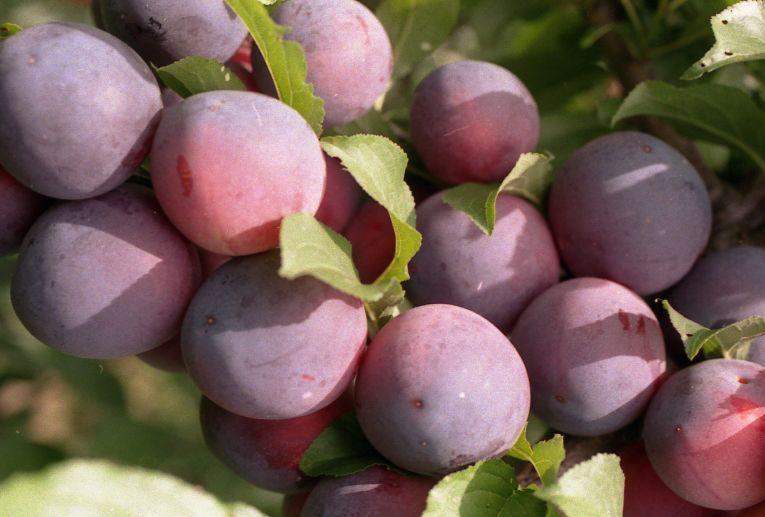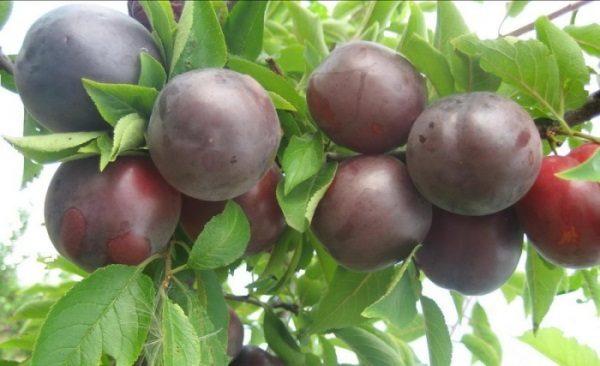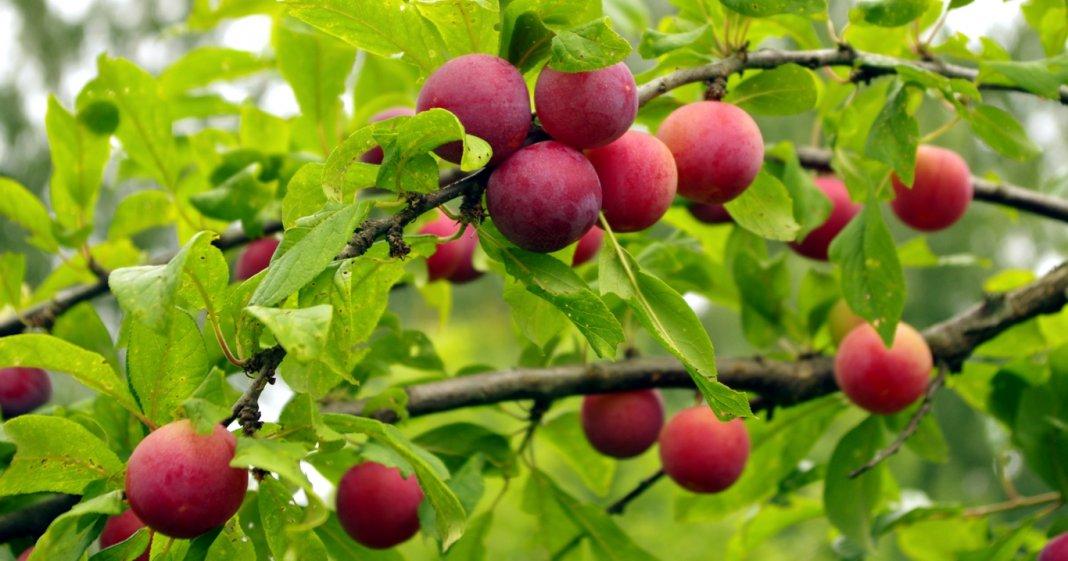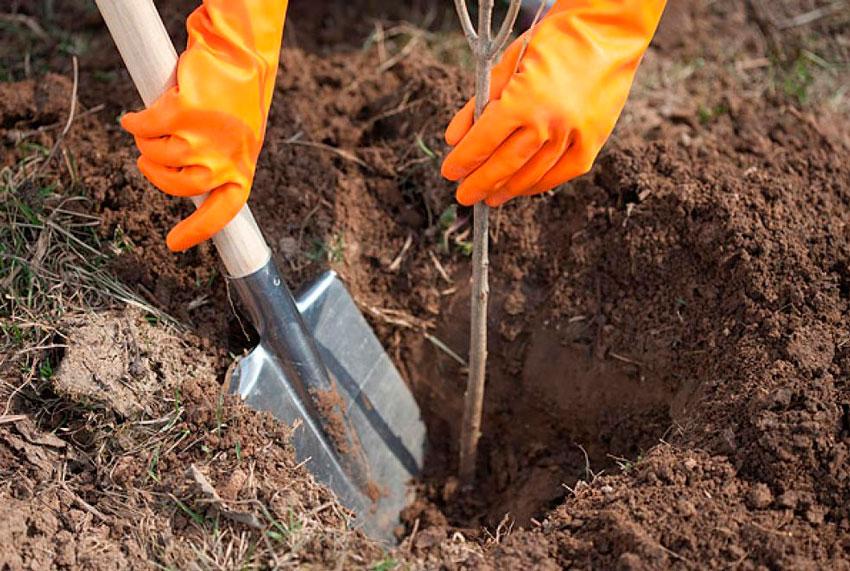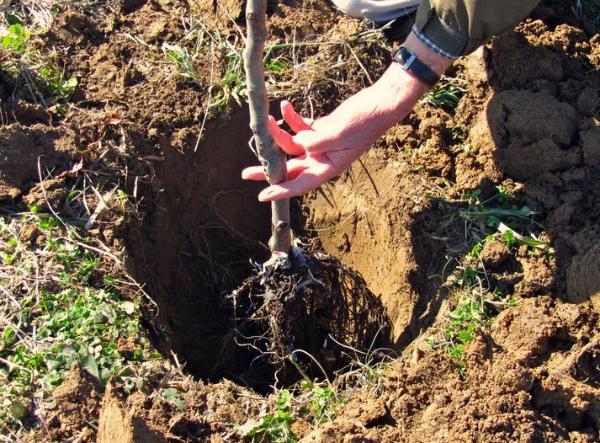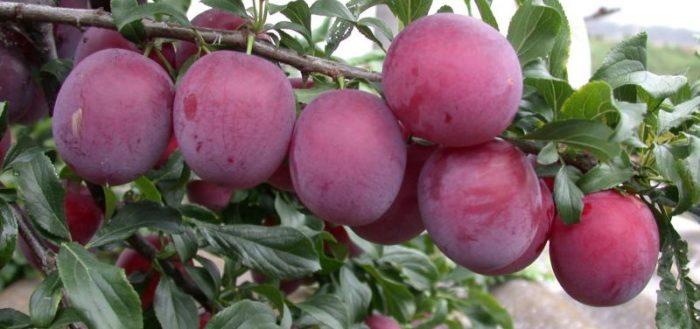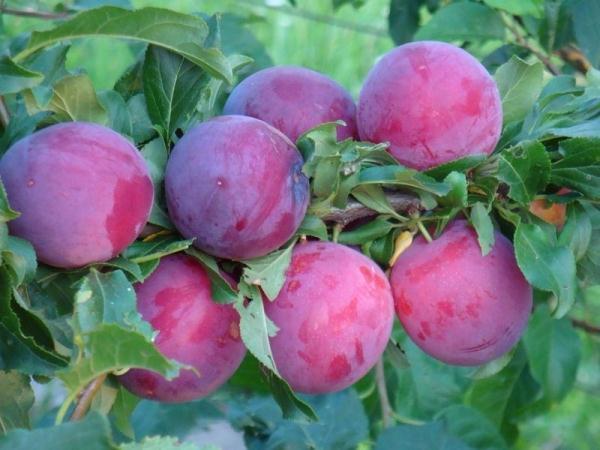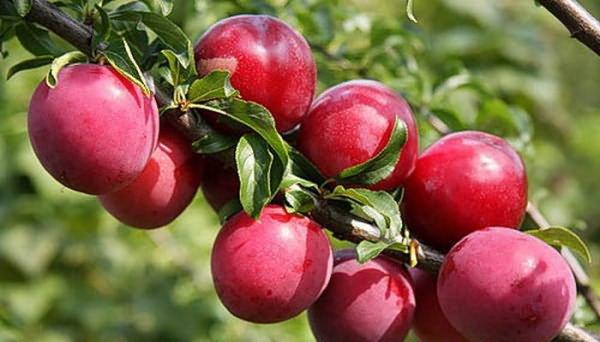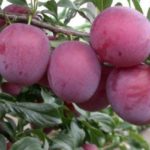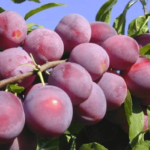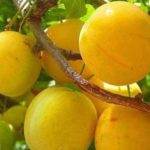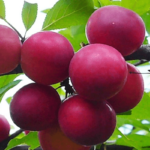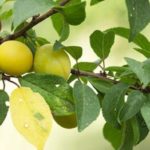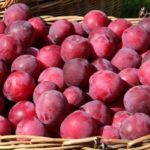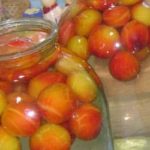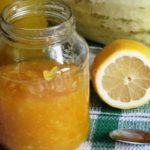Cherry plum variety Shater is considered a universal tree; the fruit is popular with both experienced gardeners and novice gardeners. The plant is famous for its resistance to adverse weather conditions, diseases and pests. Abundant fruiting, ease of care and varied use of its fruits for home harvesting and commercial use cannot remain without the love and respect of gardeners.
- Description and characteristics of cherry plum Tent
- Tree
- Fruit
- Advantages and disadvantages of the variety
- How are the Shater cherry plum and the Colonoid cherry plum similar and different?
- Features of growing varieties
- Timing
- Preparation of planting material
- Site preparation
- Planting process
- Pollinators
- Further care of varieties
- Watering
- Top dressing
- Trimming
- Preparing for winter
- Diseases and pests
- Reproduction
Description and characteristics of cherry plum Tent
Tree
According to the description of Cherry Tent, the tree is not tall, with a rounded, slightly flattened crown. The trunk is smooth, dark gray in color. The shoots are of medium thickness - from 2 to 7 millimeters. In mid-April, two small flowers with small white petals bloom from green, medium-sized buds.
The leaves are about 6 centimeters long, up to 4 centimeters wide, oval in shape, pointed at the top. The leaf color is green, medium-shiny. The edges of the leaves are wavy. The tree tolerates winter well and is moderately resistant to drought. Little susceptible to disease.
Fruit
Large fruits can reach a weight of 40 grams. The shape is ovoid. The abdominal suture is deep at the base. The color of the fruit is red-yellow, with a purple cover. The fruits ripen gradually, starting in July, and the yield is high. The pulp is medium dense, moderately fibrous, yellow-green in color. The taste of the fruit is sweet with a slight sourness. The stone is medium, about 2 centimeters, and can be separated with little difficulty.
The fruits are usually consumed fresh or subjected to further processing and preservation.
The cherry plum variety Shater is self-sterile. This means that in order to get a good harvest, it is necessary to plant a crop next to it that can serve as a pollinator for the plum.
Advantages and disadvantages of the variety
Any culture has a certain set of advantages and disadvantages.
Advantages of growing cherry plum Shater:
- good yield;
- large fruits;
- pleasant taste of fruits;
- excellent winter hardiness;
- disease resistance;
- small tree size.
Disadvantages of the variety:
- the buds may freeze due to the early flowering of cherry plum;
- the pit is difficult to separate from the pulp;
- the tree has long thorny branches.
How are the Shater cherry plum and the Colonoid cherry plum similar and different?
Cherry plum of the Kolonovidnaya variety is an unusual and rather compact crop. If you compare this variety with the Shater variety, you can see many similar qualities. Both trees grow to small sizes - up to 3 meters. Plums are similar in their high winter hardiness and adapt well to weather conditions. They grow equally well in the Moscow region. Both varieties are also disease resistant.
Cherry plum Shater and cherry plum Colonoid are self-sterile crops. The trees produce fruit in large quantities. Plums are large and can reach a weight of 40 grams. Pleasant to the taste, moderately juicy and fibrous. There are also differences in these varieties, for example, the crown of the Shater cherry plum is dense, round in shape, while in the Columnar cherry plum the crown takes up very little space and only grows upward.
Columnar cherry plum can begin to bear fruit from the 3rd year of life, Shater - a little longer, this variety bears fruit from 4-5 years after planting. Varieties also begin to ripen at different times. If the Shater cherry plum has been pleasing with its fruits since July, the harvest from Columnar cherry plum should be expected closer to August.
Features of growing varieties
Timing
It is best to choose spring for planting, since in the fall after planting the plant may not have time to take root before the first frost. Planting dates in spring are usually mid-April. In autumn - early September.
Preparation of planting material
In the fall, a larger selection of seedlings is available, so many gardeners prefer to buy planting material in advance. When choosing a seedling, pay attention to its root system, trunk and crown. The tree should not be withered or damaged.
If you bought a seedling in the fall, you can dig it in. This is done like this:
- a hole is dug approximately 50 centimeters deep;
- a seedling is placed in the hole on its side (in the south direction at an angle);
- The seedling is sprinkled with earth and dug in to the middle of the trunk.
Site preparation
It is necessary to plant the tent where there is a lot of sun. If there is groundwater close to the top layers of soil on your site, you should plant the seedling on an artificially created mound.
Pour a nutrient mixture into the hole for the plant; its composition is determined depending on the composition of the soil on your site.
If the soil is clayey, then you need to add a mixture of peat and sand to the hole; if the soil is sandy, add leaf humus and turf soil. Ideally, the planting hole should be fertilized (300 g of superphosphate, wood ash and 35 g of potassium sulfate).
Planting process
Remember that the Shater cherry plum is a self-sterile crop. This means that it must be planted either with pollinators already growing nearby, or with other seedlings blooming at the same time as it.
Landing algorithm:
- Dig a hole for the seedling about 60 centimeters deep and the same in diameter.
- If you plant several seedlings, the distance between them should be 2.5 - 3 meters.
- Thoroughly loosen the soil and add fertilizer if not already added.
- Make a small mound in the center of the hole, stick a stick into it on which the seedling will rest.
- Place the seedling on a mound, carefully spread the roots around, tie the tree to a support.
- Spill it properly. Use up to 4 buckets of water.
- Lightly trim the crown of the plant, remove dried branches and leaves.
- Mulch the soil.
Pollinators
To obtain a good harvest of cherry plum Shater, cross-pollination is necessary. In this case, everything is quite simple - any other variety of cherry plum can become a pollinator for the Tent.The main condition is simultaneous flowering.
Further care of varieties
Watering
Cherry plums should be watered in the spring after flowering, after shoot growth has stopped and when the fruits begin to color. In these cases, you need to water the Tent 2-3 times a month, depending on weather conditions. In extreme heat, watering can be increased to 1 time in 10 days. Watering can be adjusted depending on the weather, from 3 to 6 buckets per tree.
Top dressing
You can start feeding cherry plum after 1 year after planting. Fertilize the tree 3-4 times a year. In spring - before flowering, in June and July. In August, during watering, you can add organic fertilizers to the water.
Trimming
In early spring, in order to protect the plant’s root system from excess moisture, water outlets are made. At the same time, it is recommended to do pruning. When pruning, the crown is freed from dried branches, and it is also thinned out - this is done so that the branches do not interfere with each other as they grow. The tops of the branches must be pinched. Treat cut thick branches with garden varnish.
Preparing for winter
Despite the fact that the Tent is known for its winter hardiness, caring for the plant during preparation for cold weather should not be neglected.
How to prepare a tree for winter:
- Fertilize with organic and mineral fertilizers.
- Water the tree deeply at the root before it loses its leaves.
- Inspect the trunk: remove damaged bark, bleach with lime.
- Treat cherry plum from pests.
- Collect leaves without leaving them near the tree.
- If wounds and damage appear on the trunk, treat with a mixture of 2.5 tablespoons of ash and lime, 150 grams of copper sulfate, diluted in 5 liters of water with clay.
Diseases and pests
In order to protect the tree from pests, it will be enough to regularly treat it with a solution of copper sulfate, do pruning on time and whiten the trunk with lime for the winter.
Reproduction
Cherry plum can be propagated in three ways:
- Cuttings - cuttings of about 12 centimeters are cut, they are planted in a container with a nutrient substrate, covered with film and placed in a warm place for about 1.5 - 2 months. It is important to monitor soil moisture at this time;
- Planting the seeds - the largest fruits are selected and the seeds are separated from them. The seeds are washed, dried, and then planted in the ground before winter. In spring, shoots appear. It should be borne in mind that cherry plum is very sensitive to transplantation, so sprouts can only be transplanted after a year of life, or better yet, planted immediately in a permanent place;
- Budding - a small cutting is grafted onto a young tree grown from a seed. Such a tree can be plum, apricot or cherry. Budding is carried out in spring or autumn. It is important to tightly attach the cut of the cutting to the cut of the tree and cover the attachment point so that insects or dust do not get there.

